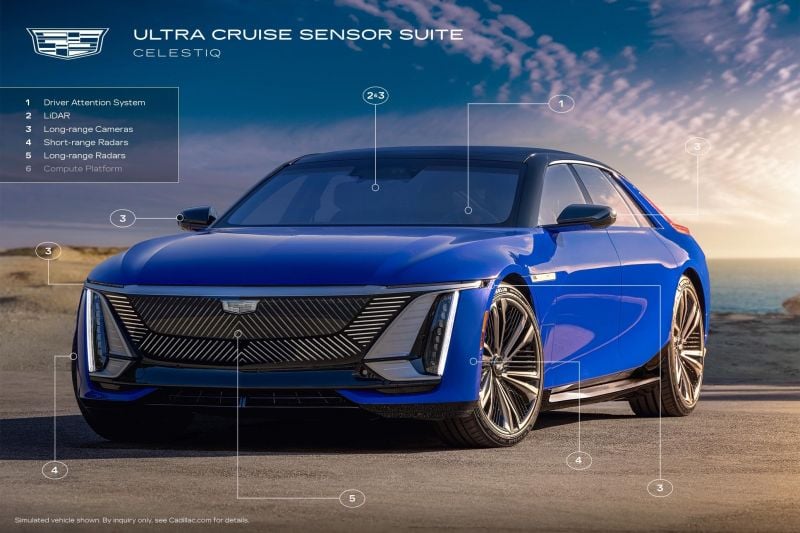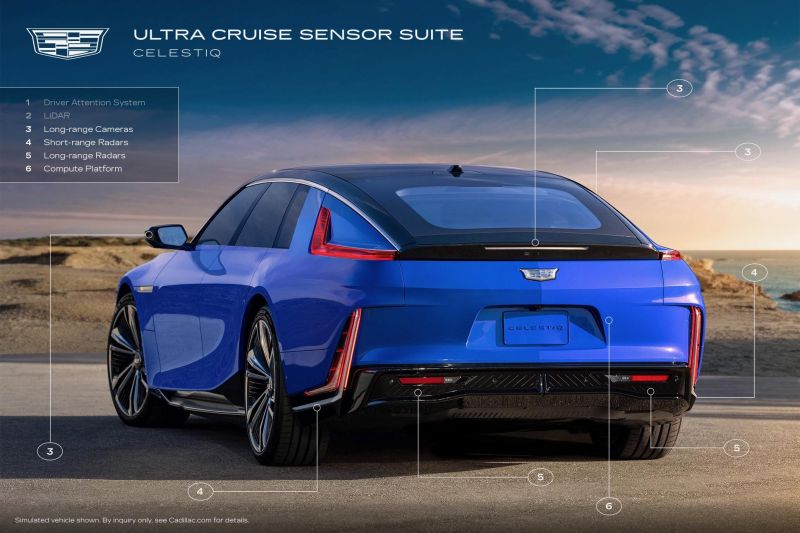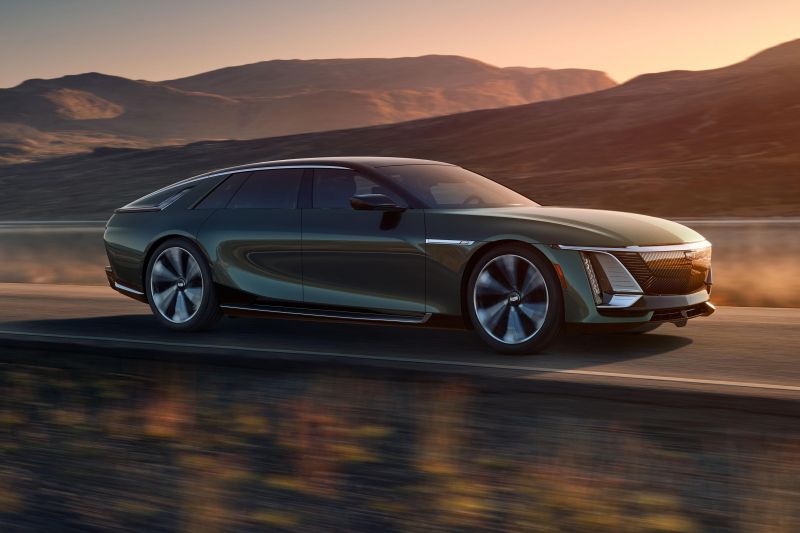General Motors’ hands-free Ultra Cruise technology will feature a 360-degree view of the vehicle thanks to a set of more than 20 sensors.
Through a combination of cameras, short- and long-range radar and LiDAR, GM says Ultra Cruise is able to provide a three-dimensional representation of the vehicle’s surroundings.
“A deep knowledge of what Ultra Cruise is capable of, along with the detailed picture provided by its sensors, will help us understand when Ultra Cruise can be engaged and when to hand control back to the driver,” said Ultra Cruise chief engineer Jason Ditman.
The level 2 autonomous system will debut in the ultra-luxury Cadillac Celestiq, scheduled for launch later this year. It will exist in tandem with GM’s existing Super Cruise system.
General Motors first announced Ultra Cruise two years ago and since then has teased small updates ahead of its launch.
The system will be powered by a scalable compute architecture featuring system-on-chips from Qualcomm, and will support over-the-air updates.
Over time, GM says it expects customers will be able to travel “truly hands-free” with Ultra Cruise “across nearly every paved public road in the U.S. and Canada, including city streets, subdivision streets and rural roads, in addition to highways”.
Its driver attention system features a small camera on the top of the steering column that uses infrared light to help monitor the driver’s head and eye position.
Seven eight-megapixel long-range cameras are located on the front, corners, sides and back of the vehicle. This system is used to detect objects like traffic signs, traffic lights, pedestrians and other vehicles.
Four short-range radar units are also placed on the vehicle to detect pedestrians crossing the street or vehicles in other lanes to a radius of up to 90 metres.
GM has also included three 4D long-range radar units on the front and back of the vehicle which will determine safe stopping distances, manage adaptive cruise control speeds and lane change manoeuvres at highway speeds and help detect an object’s location, direction and elevation relative to the speed of the vehicle.
Lastly Ultra Cruise will utilise LiDAR, located behind the windscreen, to produce an accurate three-dimensional view of the car’s surroundings and aid in establishing a precise detection of objects and road features.
The system is classified as a level 2 autonomous system which still requires the driver to be attentive and able to take charge at a moment’s notice should the system disengage.
Ultra Cruise will debut in the Cadillac Celestiq, entering production in December.
Each Celestiq will be produced at the General Motors Global Technical Center in Warren, Michigan in a high-security “clean room”-type environment called the Artisan Center.
No more than six vehicles will be assembled at any time, and each model will be personally commissioned by customers who will work with a concierge to craft their vehicle.






